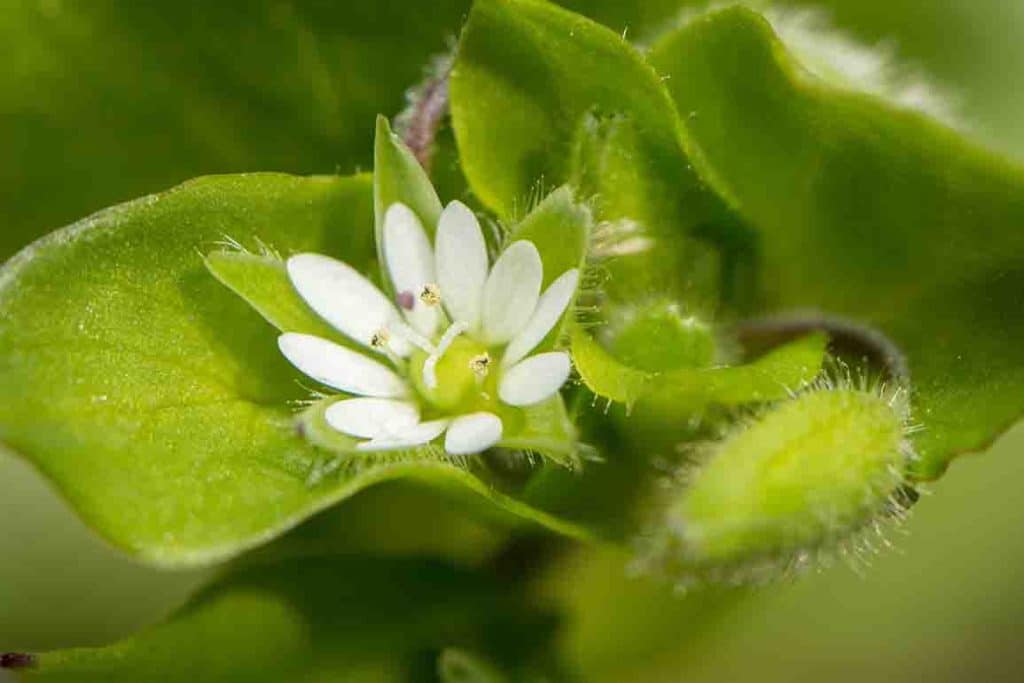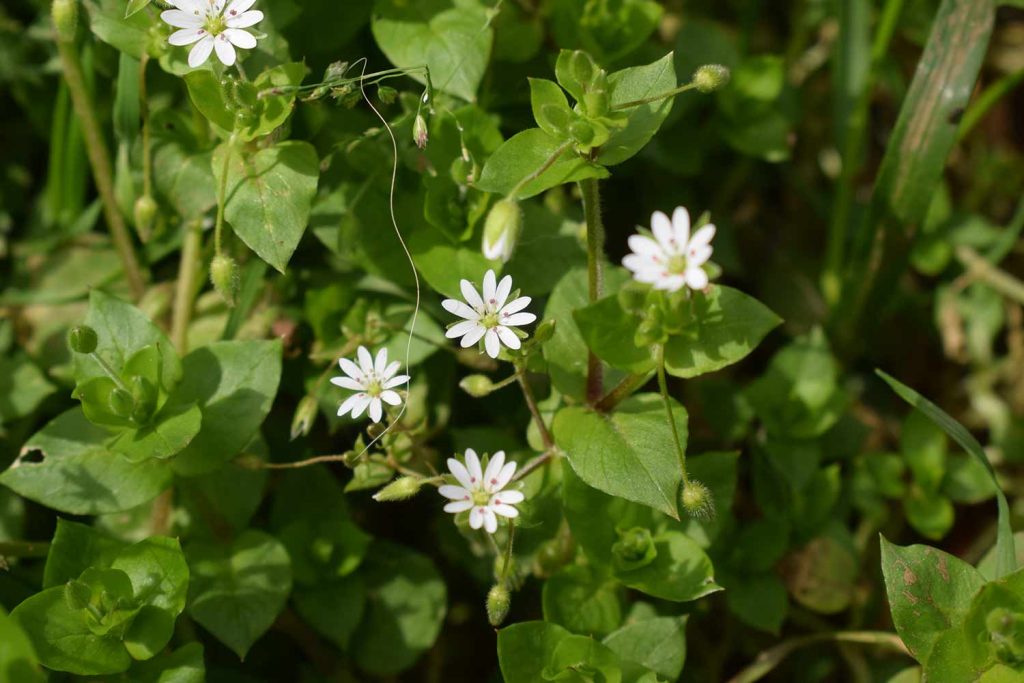Chickweed, the uninvited guest in many lawns and gardens, might seem harmless at first glance. However, its resilience and rapid spread can become a persistent problem. Chickweed, scientifically known as Stellaria media, is a common cool-season annual weed. Recognizable by its small, paired leaves and star-like white flowers, chickweed often thrives in damp, shaded areas, making lawns and gardens susceptible to invasion. In this article, we'll take a closer look at what chickweed is, how to identify it, understand its life cycle, and, most importantly, discuss practical strategies for controlling and preventing its growth in your lawn.
Identifying Chickweed

Fortunately, chickweed has distinct features that make it easy to identify. These are the features to look for in order to identify this pesky plant:
- Leaves: Chickweed has small, oval-shaped leaves with smooth edges. The leaves are oppositely arranged on the stem, meaning that they grow in pairs directly opposite each other.
- Stems: Chickweed stems are slender, weak, and hairless. They can be either prostrate or erect, and they often have a zigzag appearance.
- Flowers: Chickweed flowers are small, white, and tapered.
- Growth habit: Chickweed typically grows in low-growing mats. It can spread quickly by both seed and vegetative propagation.
Here are some additional tips for identifying chickweed:
- Chickweed is often found in moist, shady areas.
- Chickweed is a cool-season weed, so it grows best in the fall and spring.
- Chickweed is a very delicate plant, and it can be easily damaged by mowing or other forms of stress.
Life Cycle Of Chickweed

Chickweed is a common winter annual weed with a distinct life cycle that allows it to thrive in various environments. Understanding the life cycle of chickweed is crucial for effective control and prevention strategies.
- Germination: Chickweed seeds germinate readily in moist, cool soil temperatures, typically between 40-60°F. They can germinate in the fall, overwinter, and resume growth in the spring, or they can germinate in late summer or early fall and continue to grow through mild winters.
- Growth & Development: Chickweed is a fast-growing plant, reaching maturity within 6-8 weeks of germination. It typically grows in low-growing mats, forming a dense cover over the ground. The stems are slender, weak, and hairless, while the leaves are small, oval-shaped, and have smooth edges. Chickweed produces small, white, star-shaped flowers with five deeply cleft petals.
- Flowering & Seed Production: Chickweed flowers prolifically, producing an abundance of tiny black seeds. A single chickweed plant can produce up to 10,000 seeds, ensuring its continued presence in the environment.
- Maturity & Death: Chickweed completes its life cycle within a single season, dying back as temperatures warm in the late spring or early summer. However, its seeds remain viable in the soil for up to five years, allowing chickweed to re-emerge in subsequent seasons.
By understanding the life cycle of chickweed and implementing appropriate control measures, homeowners and lawn care professionals can effectively manage this common weed and maintain healthy, weed-free lawns and gardens.
Controlling & Preventing Chickweed
Because chickweed is a fast-growing plant with a shallow root system, it can be difficult to control. Chickweed also spreads quickly by seed, making it even more challenging to eradicate. Here are some effective strategies for controlling and preventing chickweed, and be sure to check out Summit's weed control services if you are in the Lincoln, Nebraska area:
Active Control Methods

To control the spread of chickweed, it is best to take care of it at the first sign of them, as these pesky weeds can easily spread and get to a point where they are extremely difficult to eradicate.
- Hand Pulling: Hand pulling is an effective way to control small chickweed infestations. Remove the entire plant, including the roots, to prevent it from regrowing.
- Herbicides: Herbicides can be used to control chickweed, but it is important to choose a herbicide that is specifically labeled for chickweed control. Be sure to follow the directions on the herbicide label carefully.
- Spot Treatment: If you only have a few chickweed plants, you can spot treat them with an herbicide. Be sure to follow the directions on the herbicide label carefully.
- Pre-emergent Herbicides: Pre-emergent herbicides can be used to prevent chickweed seeds from germinating. Apply the herbicide in the early spring, before the chickweed seeds germinate.
- Post-emergent Herbicides: Post-emergent herbicides can be used to kill chickweed plants that have already germinated. Apply the herbicide to the chickweed plants when young and growing.
Preventative Methods

Prevention is the key to keeping pesky weeds from taking root in your lawn. Using these methods, you make your lawn inhabitable for chickweed and other nuisance weeds to take root.
- Maintain A Healthy Lawn: A healthy lawn with dense growth of desirable grasses and other plants is less susceptible to weed invasion. Aerate and fertilize your lawn regularly to promote healthy growth.
- Avoid Overwatering: Chickweed prefers moist conditions, so it is important to avoid overwatering your lawn. Water deeply and infrequently, and allow the soil to dry out slightly between waterings.
- Maintain Proper Mowing Height: Mowing too low can damage desirable plants and make them more susceptible to weed invasion. The ideal mowing height for most grasses is between 2 and 3 inches.
- Remove Chickweed Promptly: Remove chickweed plants as soon as you see them to prevent them from flowering and producing seed.
- Use Mulch: Mulching can help to prevent chickweed seeds from germinating and can also help to suppress the growth of existing chickweed plants. Use a thick layer of mulch, such as bark chips or wood chips, to cover the soil around your plants.
Chickweed might be a persistent garden intruder, but armed with knowledge and proactive measures, you can successfully manage and prevent its spread. By incorporating these strategies into your gardening routine, you'll not only tackle existing chickweed but also cultivate a healthier, more resilient garden that thrives season after season.
